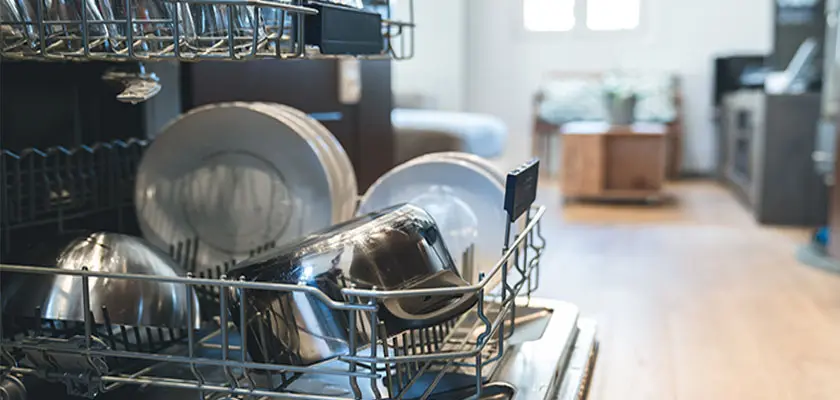Dishwashers are underappreciated, until the moment they stop working.
This appliance is a staple for many homes and can become a frustrating issue. When dishes start piling, it’s even more difficult to address what went wrong with the dishwasher.
Sometimes, dishwashers can be fixed with a very quick cleaning, while other times, there could be a mechanical issue to address.
If you have any questions about dishwasher coverage, don’t hesitate to call us today: 800-670-8931
Common Problems with Dishwashers
The most common reason for your dishwasher to either not drain or drain poorly is when there are food particles clogging the drain. To help solve this problem quickly, try the following:
- Use a solution of half a cup of baking soda and half a cup of vinegar, poured into the dishwasher.
- Wait 10 minutes, then pour in boiling water to help permeate through trapped food particles.
- Run the dishwasher through a cycle without loading your dishes.
Take precautions when loading your dishwasher, such as by rinsing your plates in the sink, so that less food particles are caught in your dishwasher. It can be helpful to also have a drain basket in your sink to easily shake out after rinsing your dishes.
If your dishwasher is leaking but doesn’t seem to have standing water, check the rubber gasket around the edges of the door. Gaps in the gasket will cause water to leak out of the dishwasher.
5 Steps for Troubleshooting the Dishwasher
Select Home Warranty offers home warranty coverage to repair or replace your dishwasher due to mechanical issues. Before submitting a claim, follow these 5 troubleshooting steps.
1. Run the garbage disposal. Your garbage disposal connects to your dishwasher and may need its own troubleshooting. Check that both are connected by a hose and that the hose is intact without bends to cause the buildup of waste. Be sure the hose is clear enough for water to pass through.
2. Find out your dishwasher’s make and model by looking at the side of the hinged door. By looking up your individual dishwasher, you can see if your appliance has a filter or a simpler basket to clean.
3. Clear the basket of food particles. It’s certainly not fun to reach into a mystery puddle at the bottom of your appliance, but older dishwashers have a simple catch that can be removed and shaken out in the trash.
4. Clean the dishwasher filter. More modern dishwashers have a filter that comes in two parts with a sieve and a drain filter. You can remove these parts by taking out your bottom rack and following instructions to easily remove the filter based on your individual dishwasher. Rinse and gently scrub the sieve and drain filter to remove calcium and food build up.
5. Turn on your dishwasher and listen for the motor. If the dishwasher sounds strained, it could be a problem with the pump, and requires help from a technician.
Dishwasher Home Warranties
Did you know you can gain coverage on your dishwasher, as well as many other essential appliances, including your fridge and oven?
Select Home Warranty offers coverage on all modules, components and parts of the dishwasher necessary to the functionality of the dishwasher. This includes the control board, pump, switches, drain pump, temp control, heating elements, and drain lines.
To help prepare in the case of a breakdown, consider a home warranty for greater peace of mind.
Does your family depend on the dishwasher? Get your free quote to find out how little it costs to protect your home and your wallet from surprises. Call: 800-670-8931

